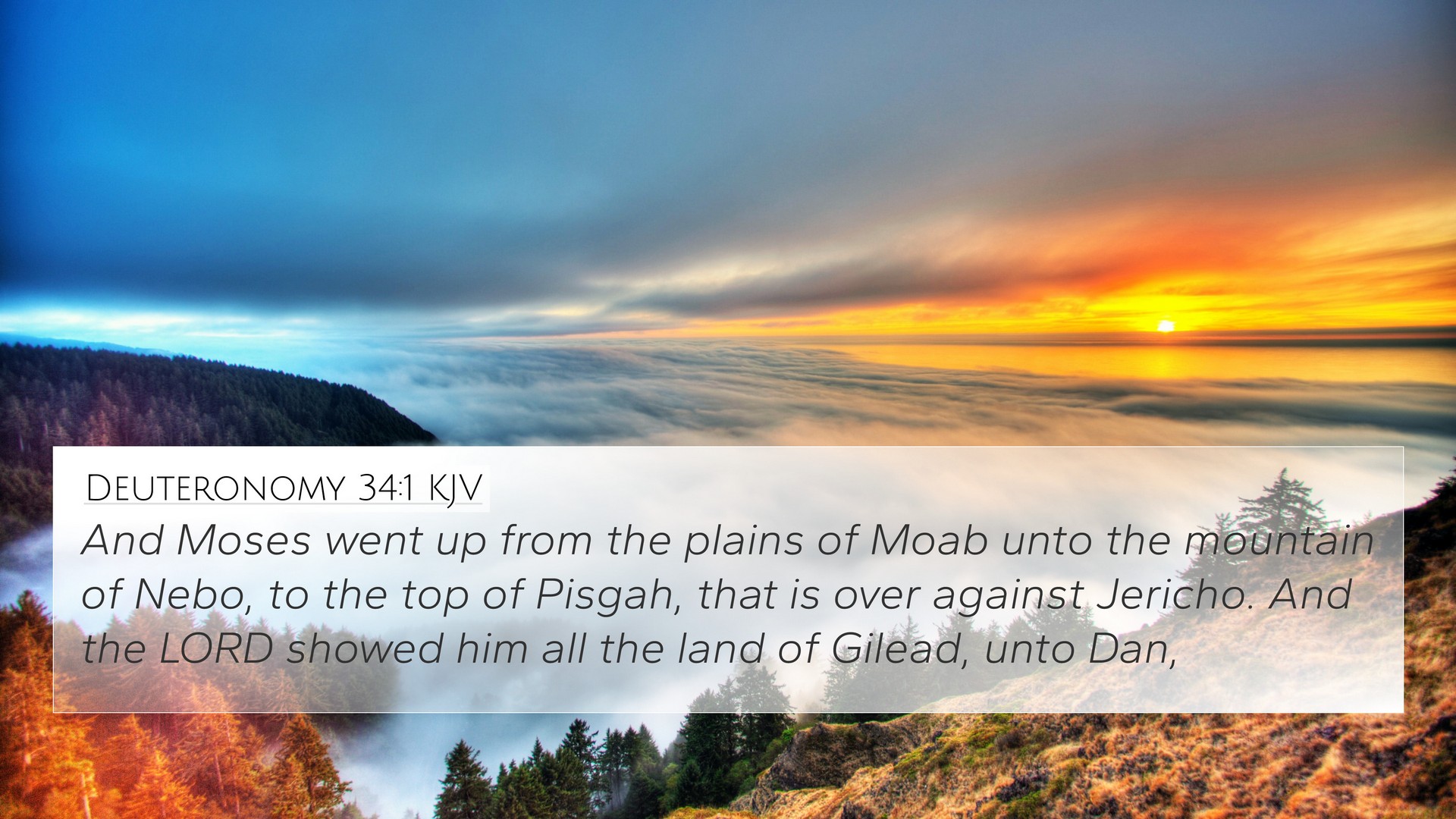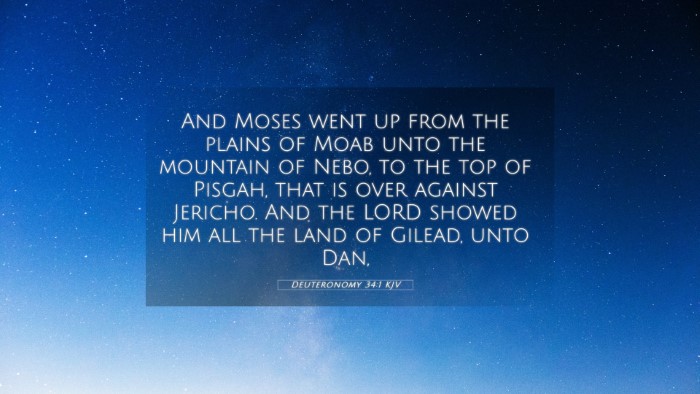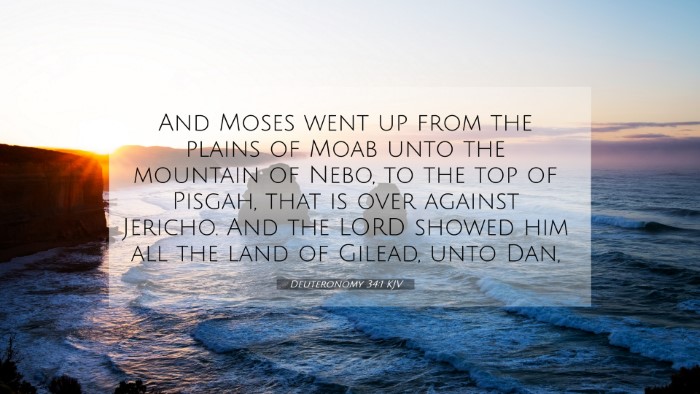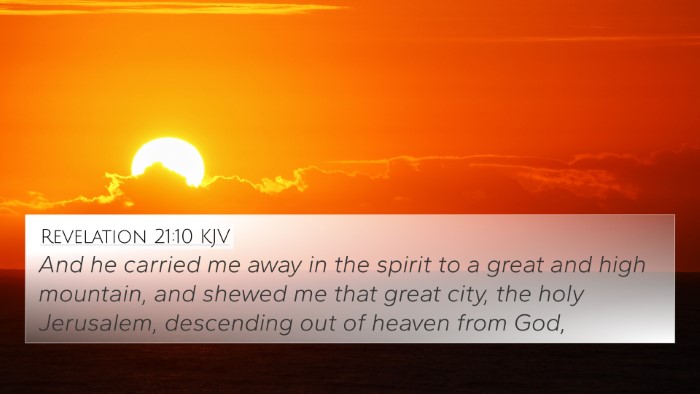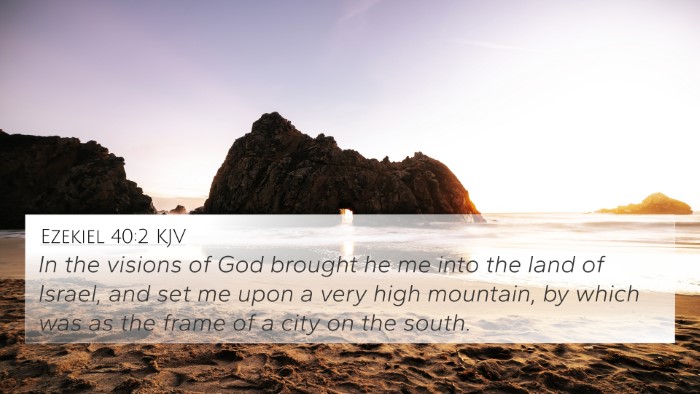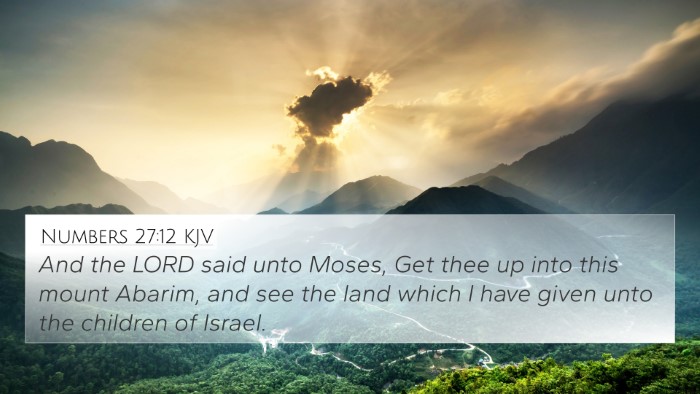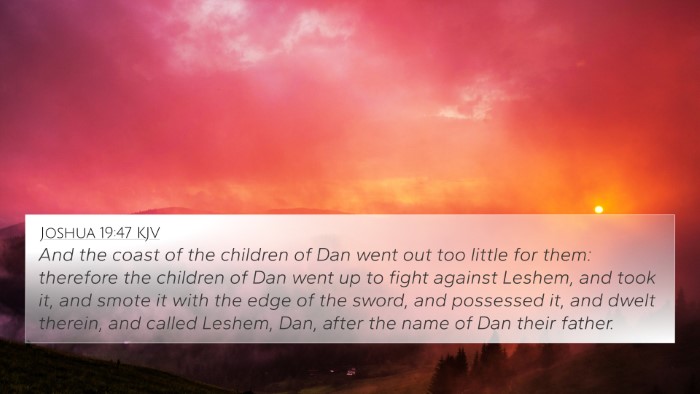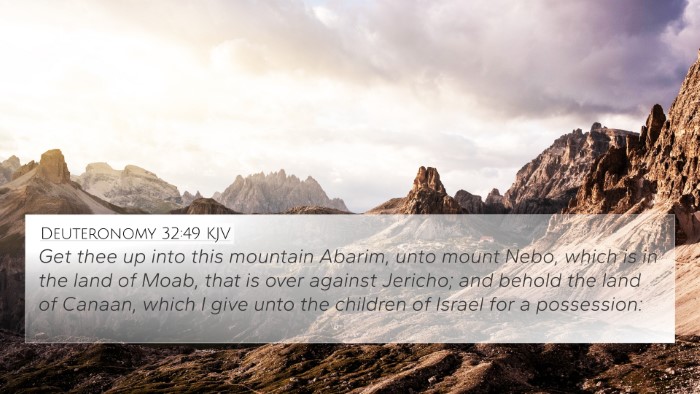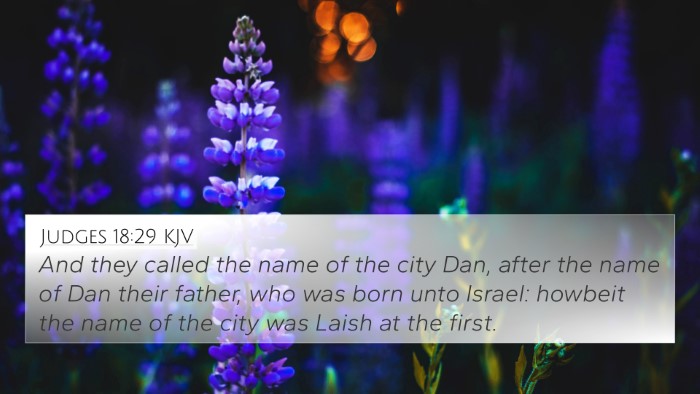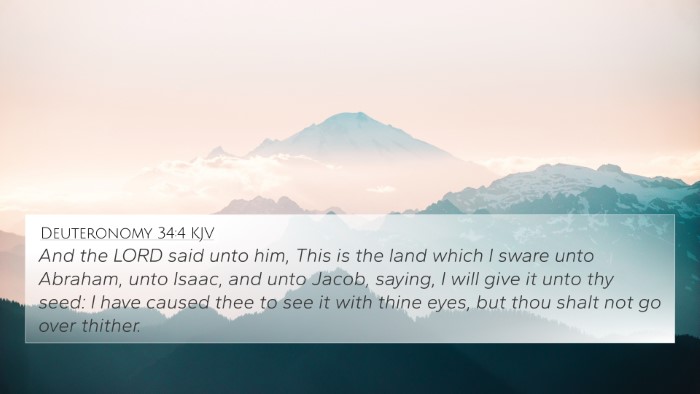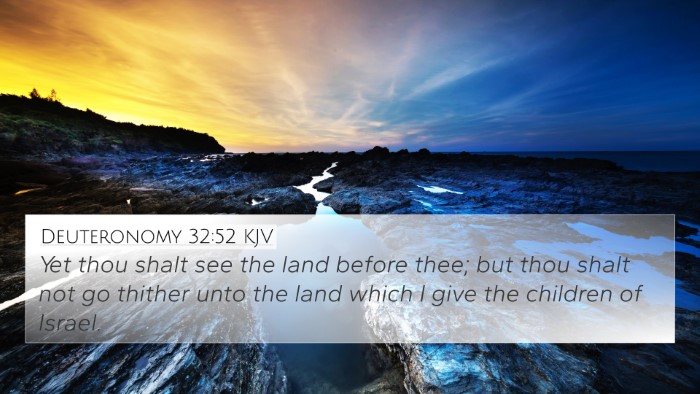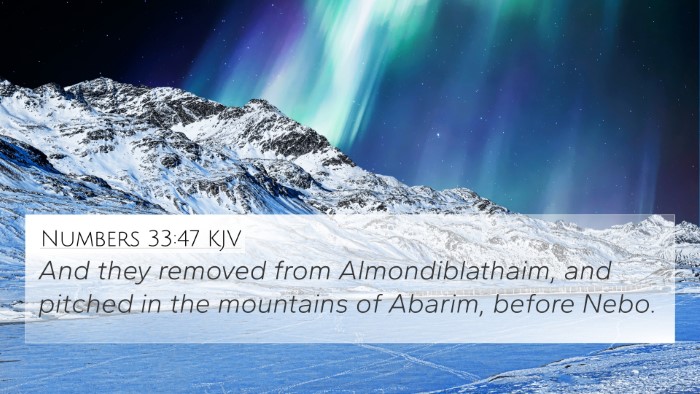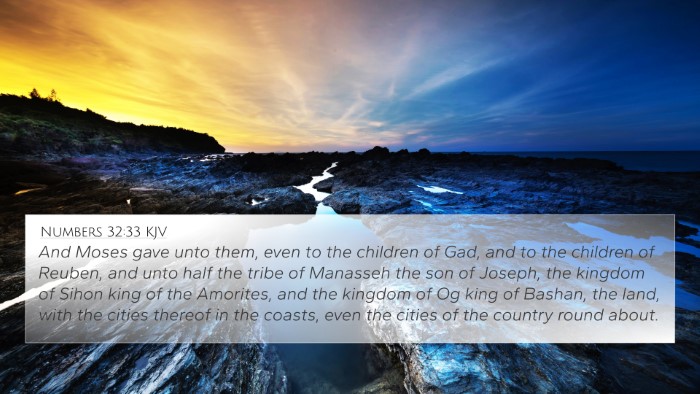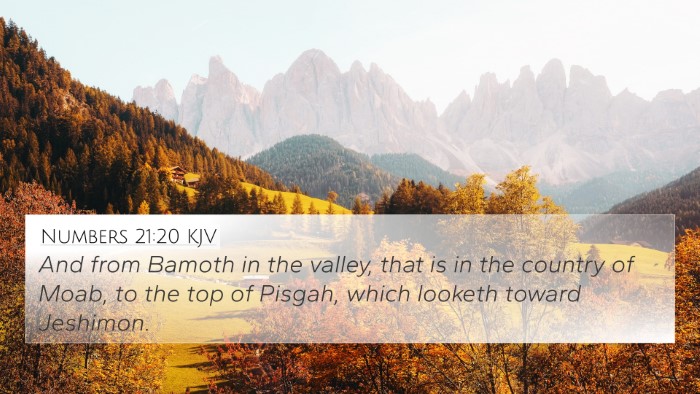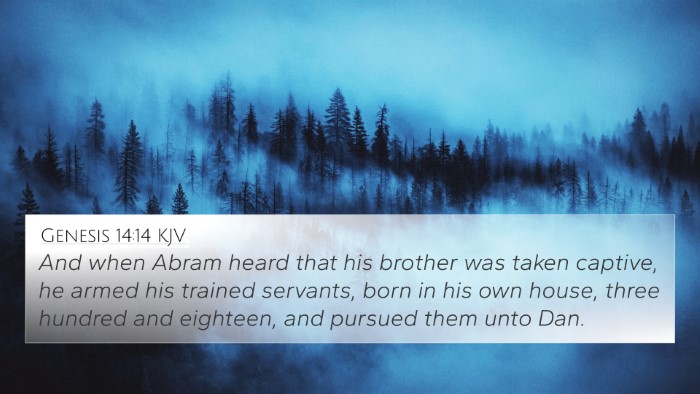Understanding Deuteronomy 34:1
Bible Verse: Deuteronomy 34:1 - "And Moses went up from the plains of Moab unto the mountain of Nebo, to the top of Pisgah, that is over against Jericho. And the Lord showed him all the land of Gilead unto Dan."
Verse Meaning Overview
This verse marks the conclusion of the Pentateuch, presenting a pivotal moment in the narrative of Moses. It captures his ascent to Mount Nebo, where he receives a divine vision of the Promised Land. As Moses stands atop Pisgah, he embodies the culmination of a journey that spans generations and signifies the importance of faithful leadership, divine promise, and human limitation.
Contextual Background
Moses, after leading the Israelites for forty years through the wilderness, arrives at the edge of the land promised to Abraham, Isaac, and Jacob. However, he himself will not enter the land due to previous disobedience (Numbers 20:12). This raises theological themes surrounding judgment, grace, and the uncertainty of human achievement when striving towards divine goals.
Commentary Insights
Matthew Henry's Commentary
Henry emphasizes that Moses's elevation to Mount Nebo represents not only physical ascent but also spiritual insight. The view from this mountain symbolizes God's faithfulness in fulfilling promises. Henry points out that Moses’s perspective from the mountain serves as a reminder of both the fulfillment and limitation inherent in human leadership. The land presented to him, yet unattainable, signifies the overarching divine plan that extends beyond individual lives.
Albert Barnes’ Notes on the Bible
Barnes focuses on the geographical significance of the locations mentioned. Mount Nebo and Pisgah provided a panoramic view of the land that would be settled by the Israelites. He notes that this moment of revelation illustrates God’s provision, showing Moses what he had led his people toward, despite his inability to enter. Barnes highlights the emotional weight of this moment, suggesting that it reflects the hope for future generations and the enduring nature of God’s promise.
Adam Clarke’s Commentary
Clarke dives into the historical implications of the verse. He interprets Moses’s ascent as a symbolic entrance to a new era for the Israelites. The specificity of the locations adds depth to the narrative, allowing readers to appreciate the tangible reality of the Promised Land. Clarke also emphasizes the merciful aspect of God revealing the land to Moses, reflecting on the nature of divine mercy and the reaffirmation of God's promises despite human failings.
Thematic Connections
Deuteronomy 34:1 serves as a key verse connecting numerous themes throughout Scripture:
- Divine Promise: The assurance God gives to His people throughout the Old Testament (Genesis 12:7).
- Leadership and Legacy: Moses' leadership is contrasted with Joshua's upcoming role (Joshua 1:1-2).
- Faithfulness: God's faithfulness in guiding His people (Hebrews 11:13-16).
- Vision and Hope: The idea of vision extends to New Testament revelations (Revelation 21:1).
- Human Limitation: Reflecting on the consequences of disobedience (Numbers 20:12).
- Geographical Importance: The significance of locations in God’s salvific plan (Matthew 2:23).
- Preparation for New Beginnings: Joshua leading into the land (Deuteronomy 31:7-8).
Cross-References to Deuteronomy 34:1
For a deeper understanding of Deuteronomy 34:1, consider these Bible verse cross-references:
- Numbers 20:12: The consequence of Moses' disobedience that prevented him from entering the Promised Land.
- Deuteronomy 3:27: God's command to view the land from the mountains before his death.
- Joshua 1:1-2: The transition of leadership from Moses to Joshua.
- Hebrews 11:13-16: The faith of Israel’s ancestors regarding the Promised Land.
- Matthew 5:5: The meek shall inherit the earth, echoing the blessing of the land.
- Revelation 21:1: New heaven and new earth connection tied to God’s promise of a homeland.
- Genesis 12:7: The original promise of the land to Abraham.
Conclusion
Deuteronomy 34:1 encapsulates a profound narrative moment rich with meaning and theological depth. The verse captures the duality of God's promise and human limitation, the legacy of a great leader, and the hope for future generations. It is a reminder that while Moses's journey concludes, God's plan for His people continues into the next chapter with Joshua leading the way into the fulfillment of God’s promises. This verse invites readers to reflect on the continuity of God's purpose across generations and the importance of leadership guided by divine direction.
Tools for Understanding
For those interested in deeper study, utilizing a Bible concordance or a Bible cross-reference guide can provide invaluable insights into connecting verses and themes, enhancing the overall comprehension of Biblical texts. The use of Bible reference resources or cross-reference Bible study methods can uncover additional layers of meaning in similar verses throughout scripture.
SEO Keywords Implementation
This analysis also incorporates key phrases like bible verse cross-references, connections between Bible verses, and cross-referencing Biblical texts to assist readers searching for a comprehensive study of how verses relate to each other. By exploring Bible verses that relate to each other, individuals can deepen their understanding of the complex narrative of the Scripture.
